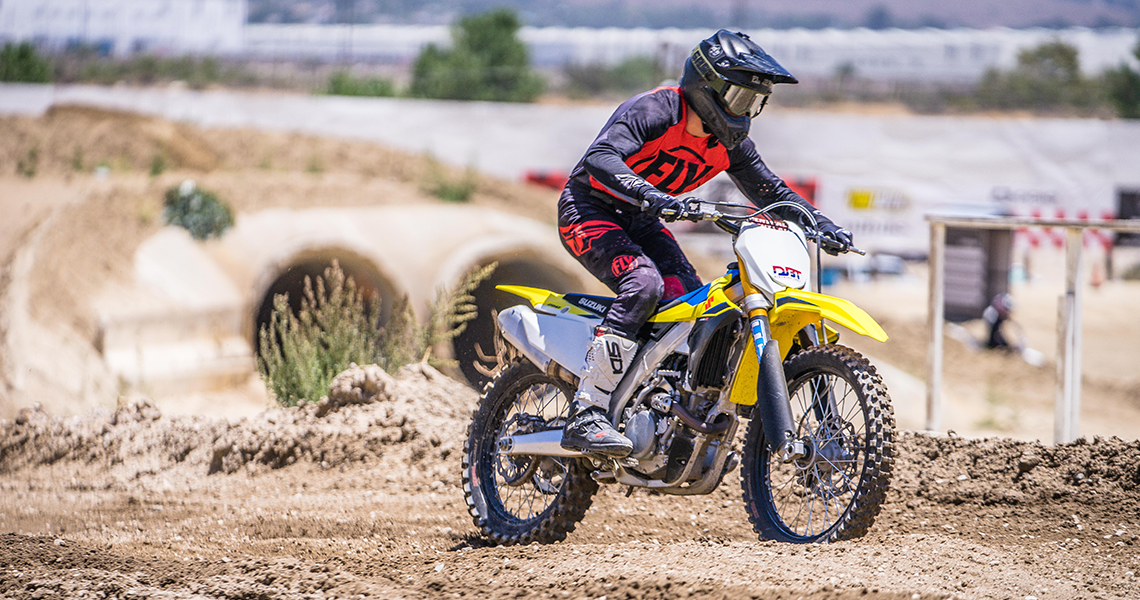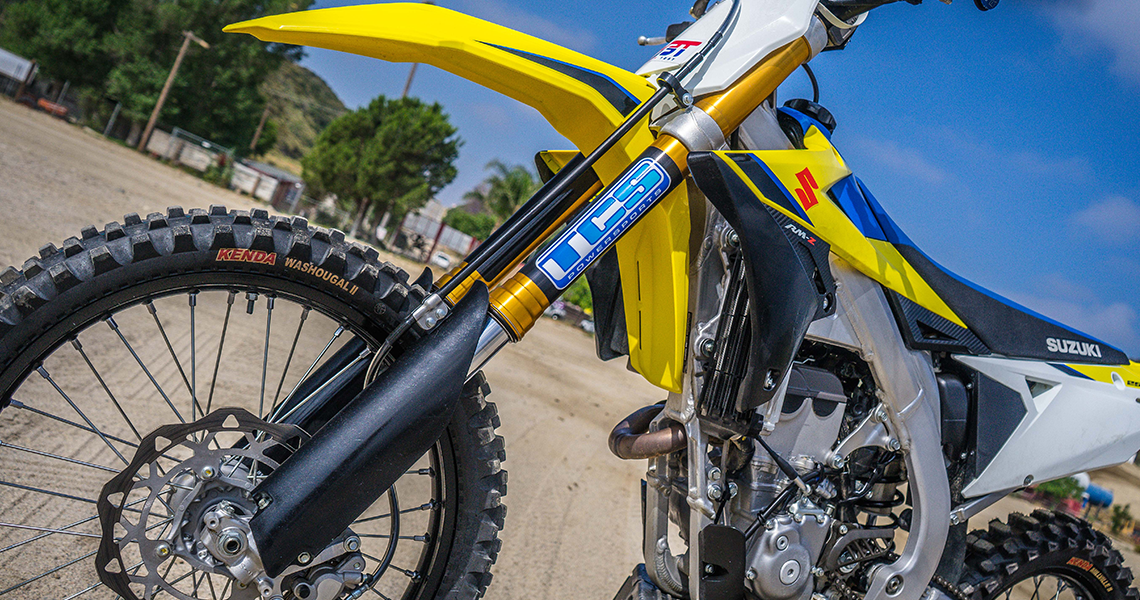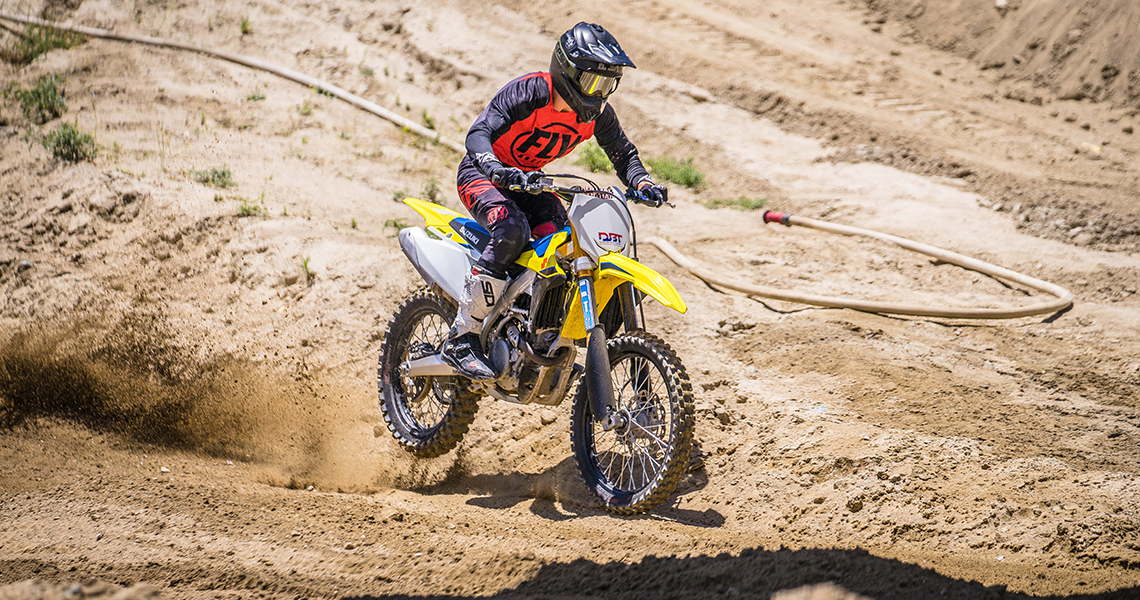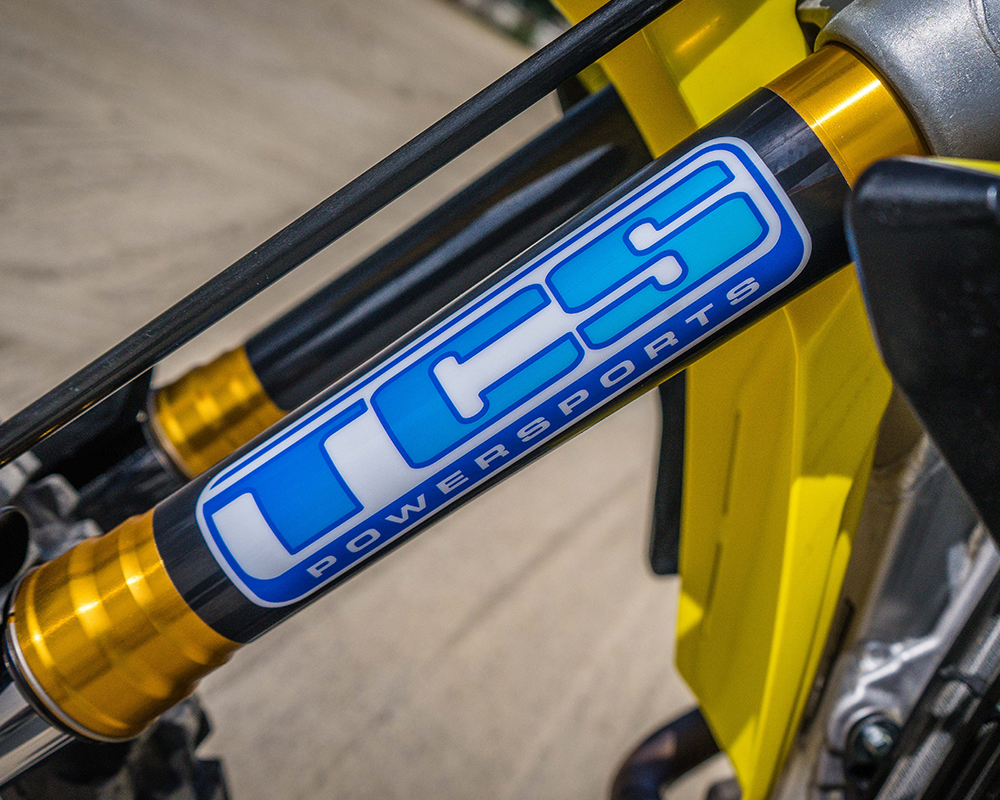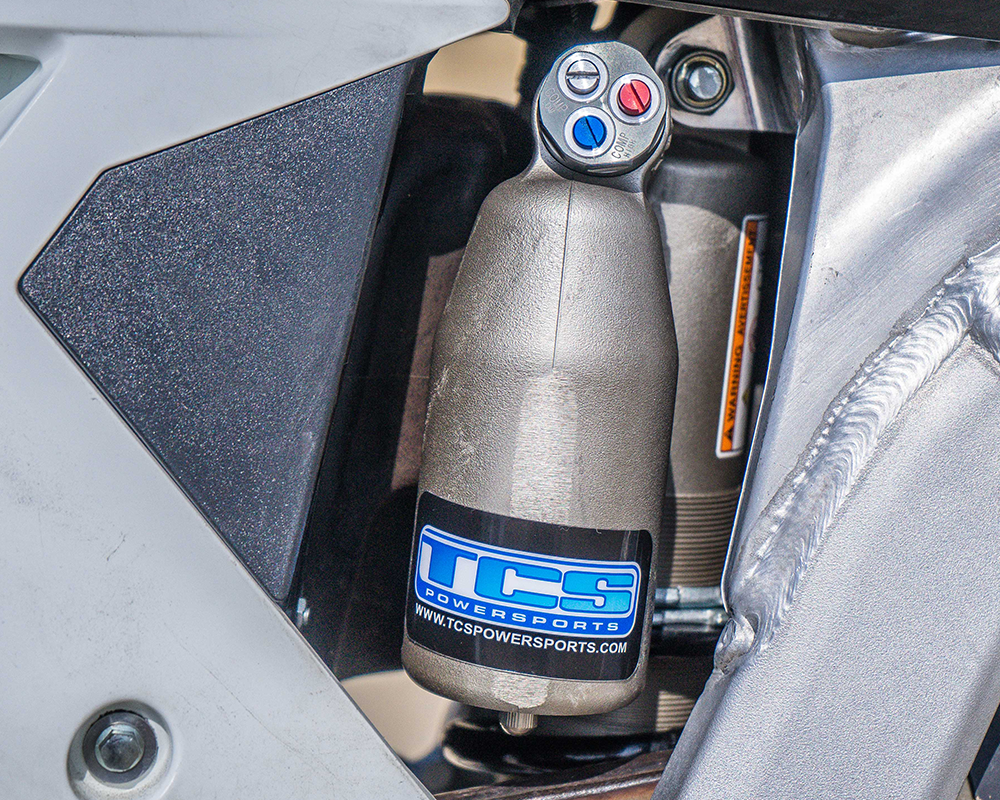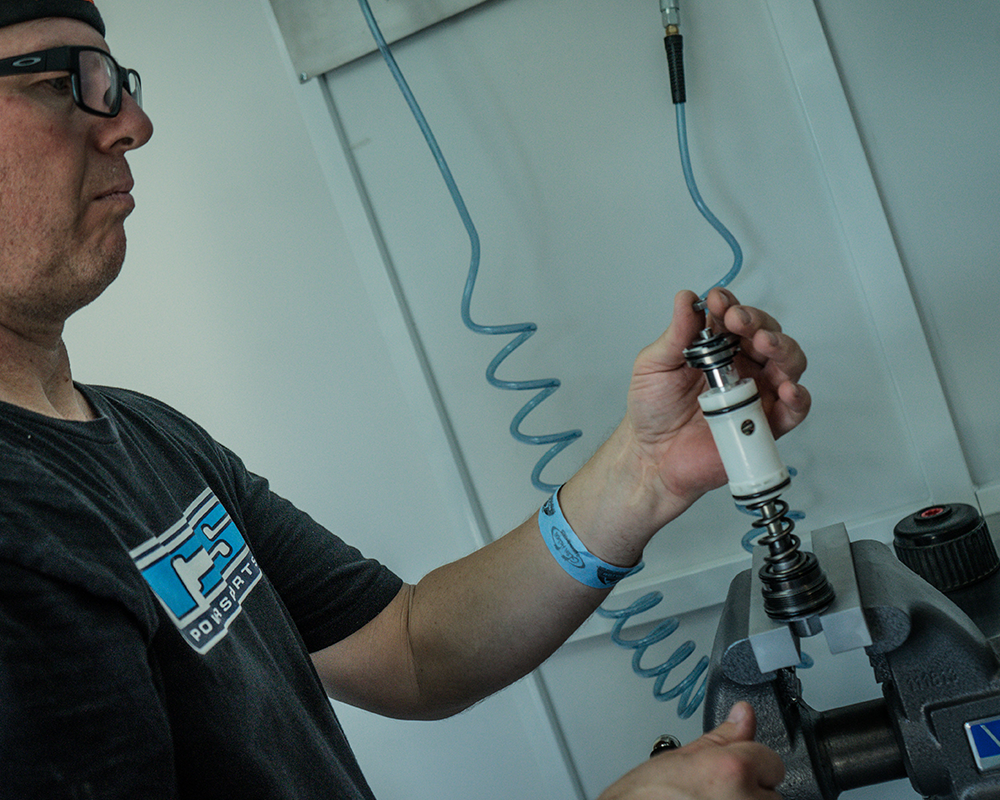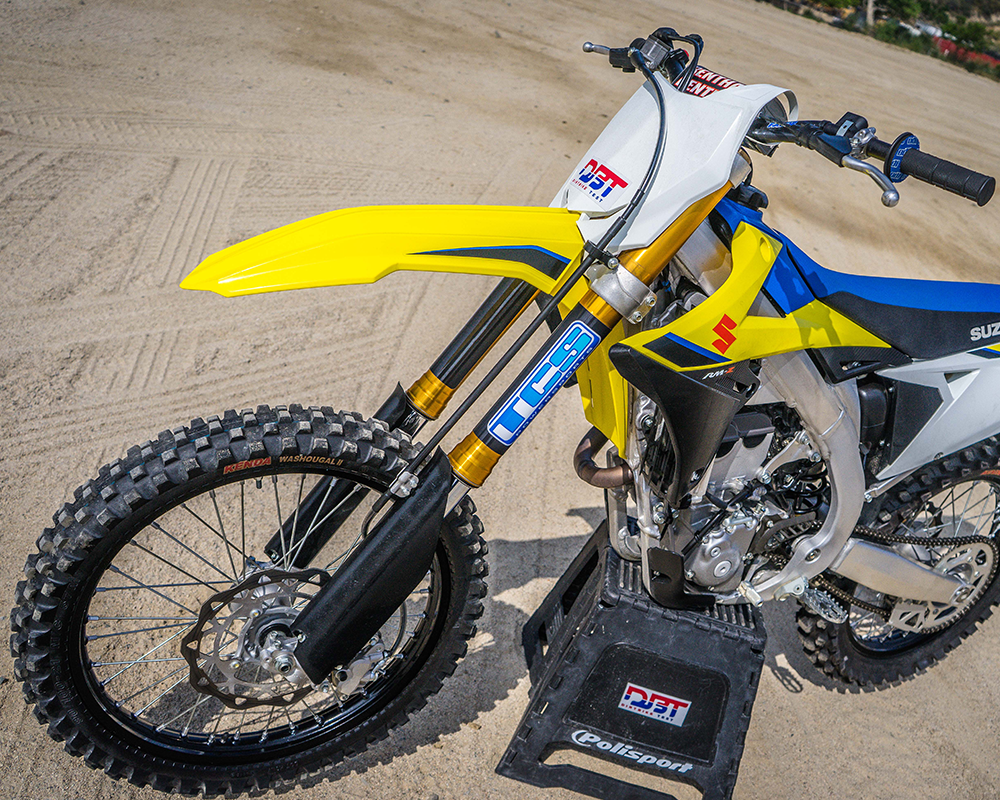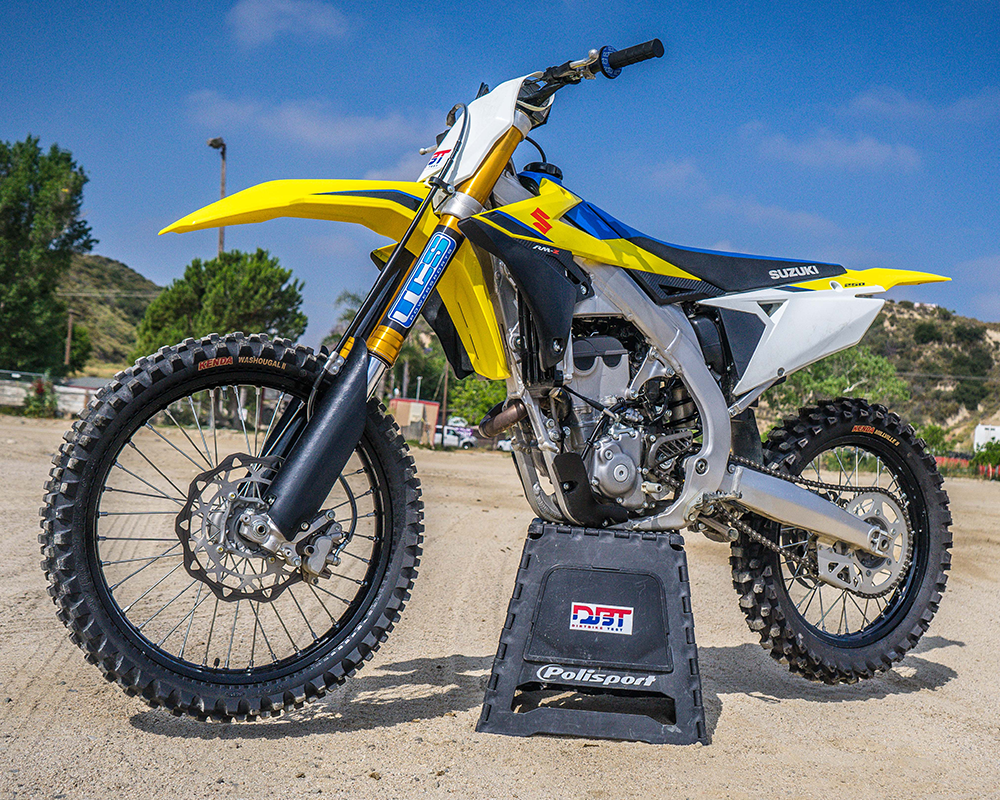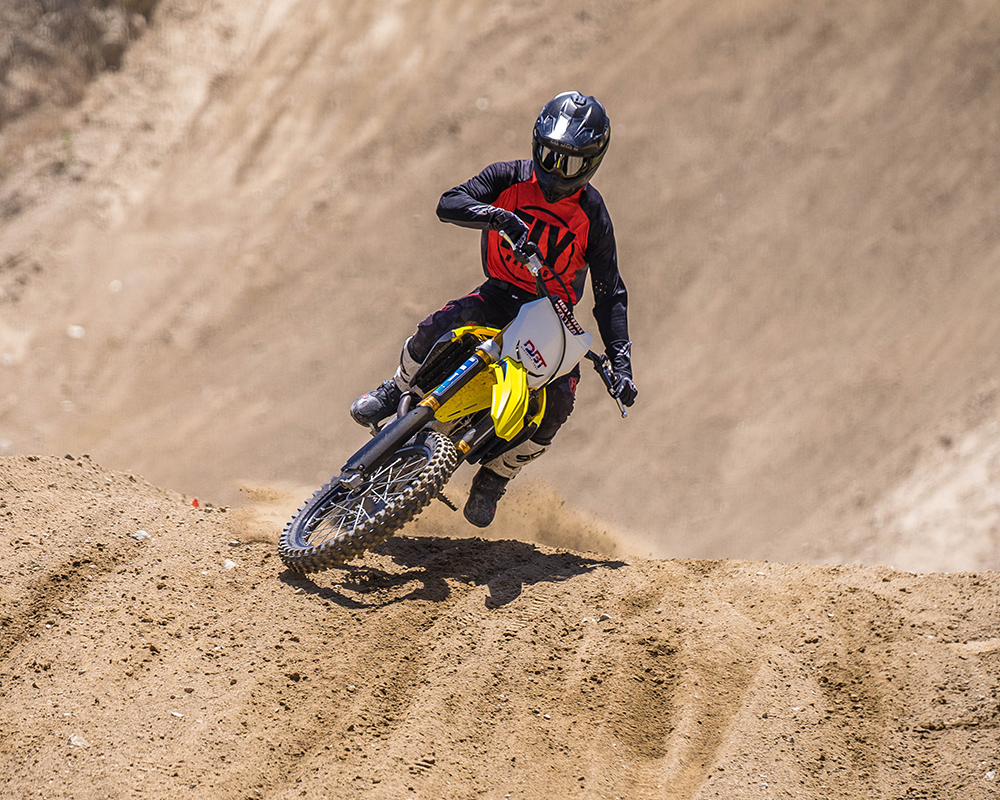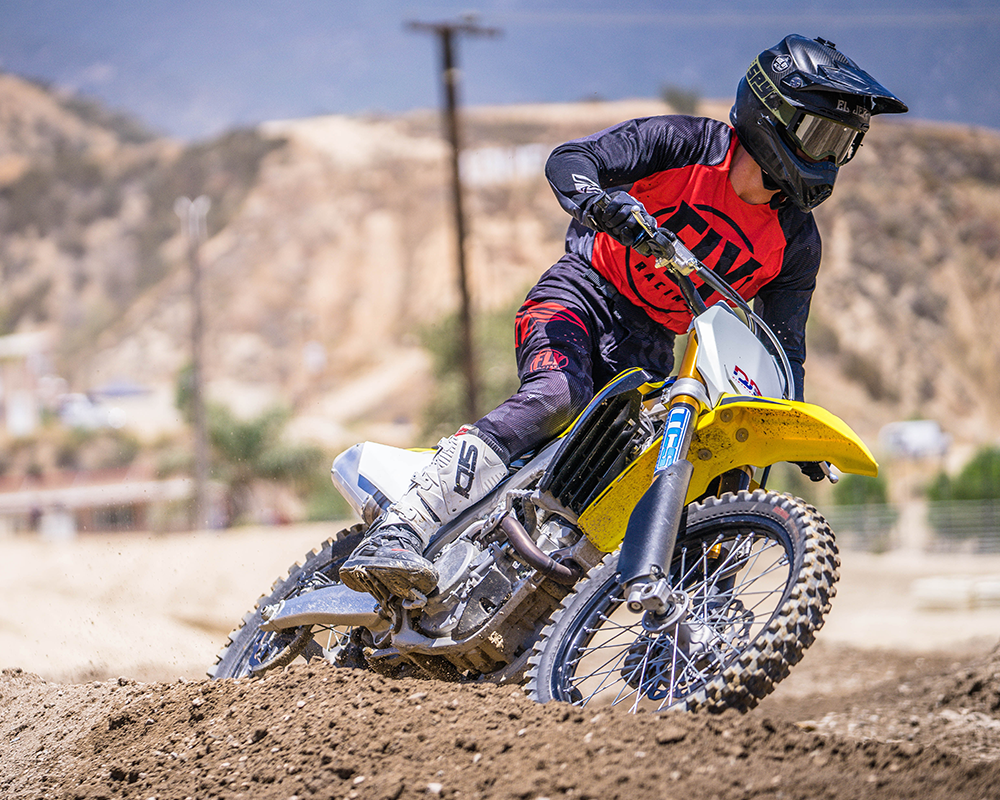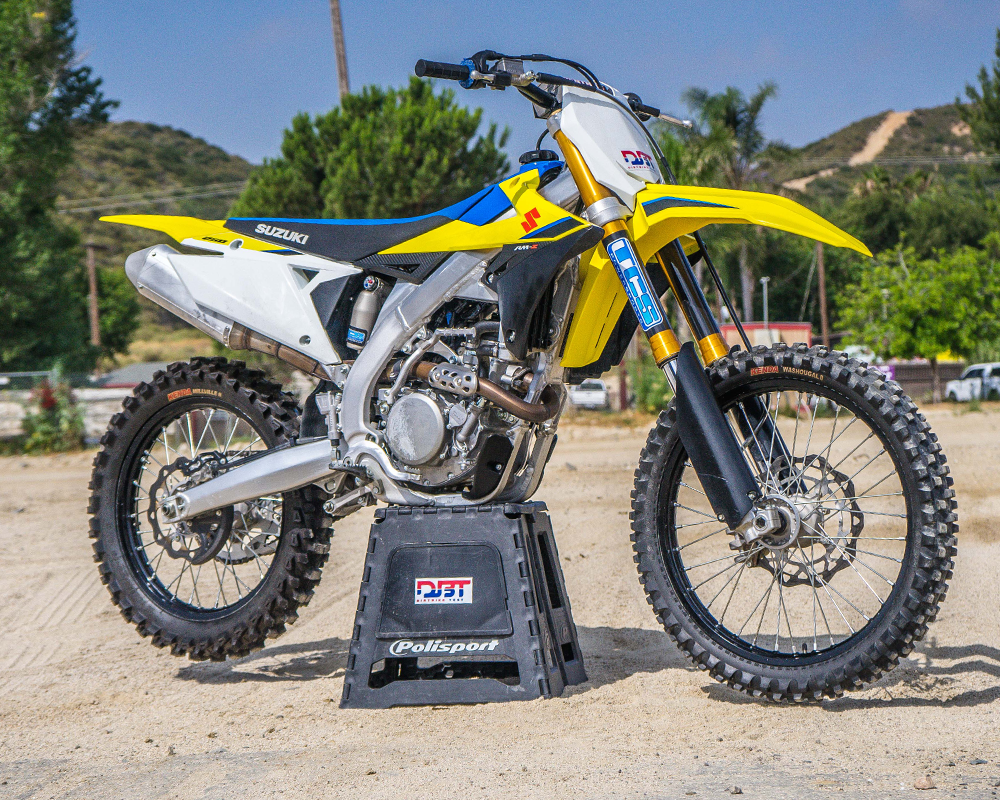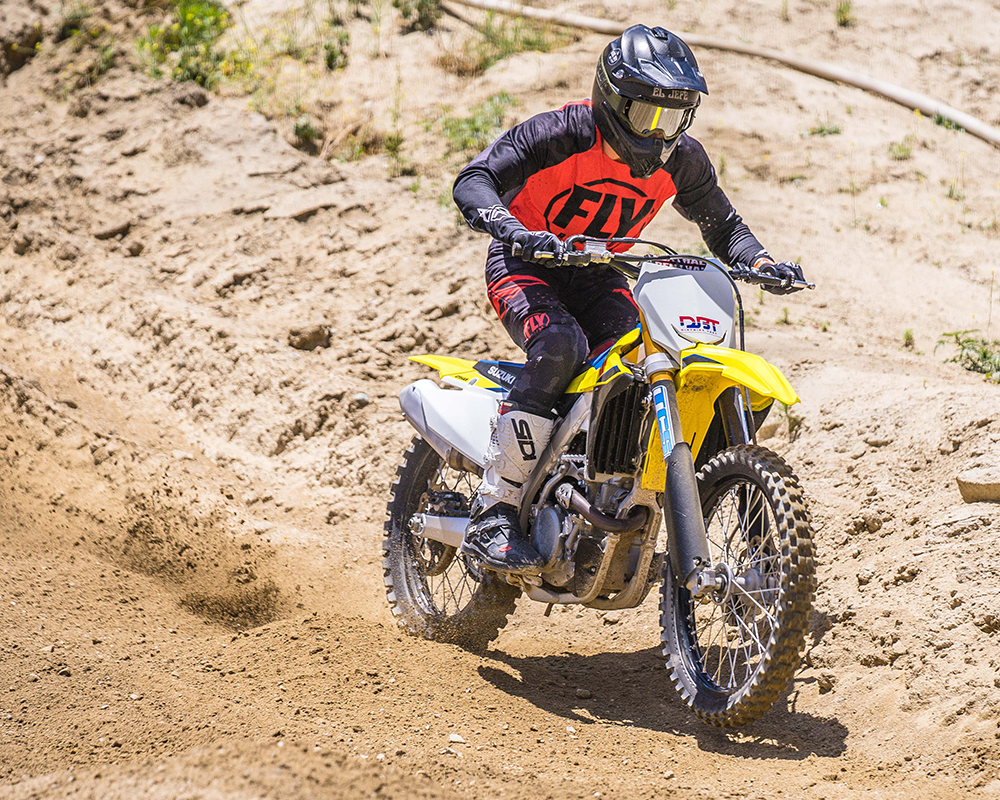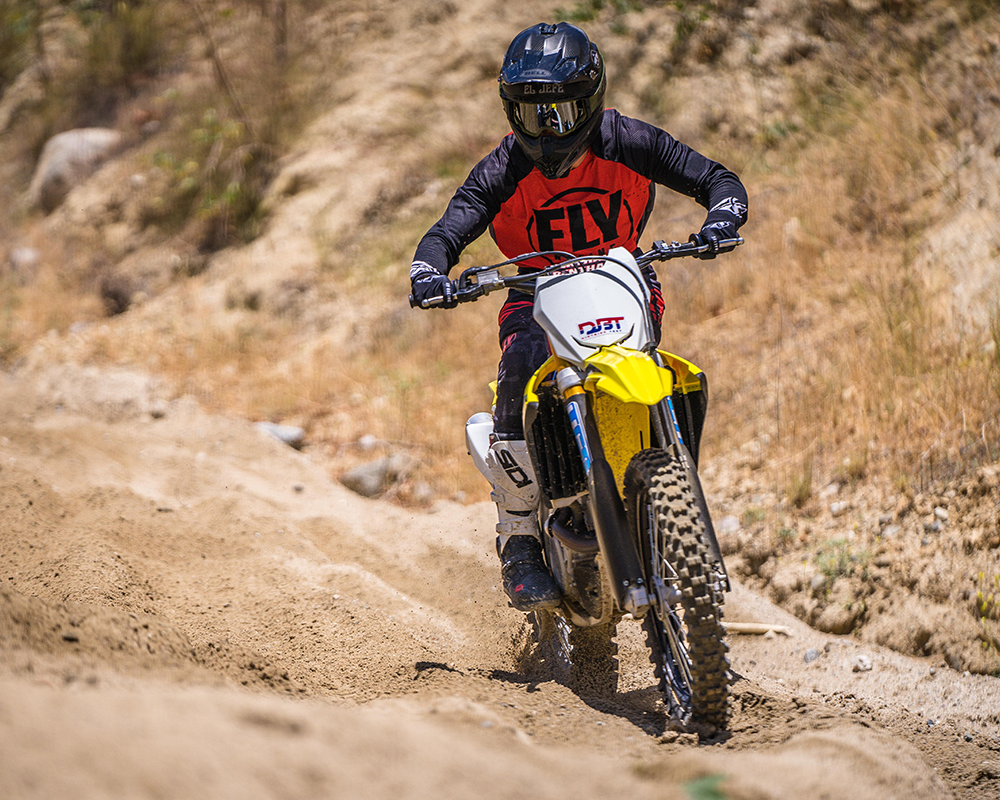TCS Powersports Suspension Revalve For RM-Z250
Company: TCS Powersports
Price: $695
Additional Pricing
- Revalve: $435
- Shock Spring: $130
- Fork Springs: $130
- Better handling motorcycle all the way around.
- Confidence inspiring and more fun to ride.
- Fairly inexpensive yet effective mod.
- Doesn't erase the stiff chassis feel of the Suzuki.
What it is
- Revalve and respring by TCS.
- Lighter valving and lighter springs used.
- Shortened shock shaft by 3mm.
The newest generation Suzuki’s, and the RM-Z250 in particular, suffer from suspension setup issues for most riders. The stock suspension is overly stiff for 99% of the population. Heavy fork springs paired with heavy valving up front really hurt the RM-Z’s performance out on the track, especially considering even fast and aggressive riders who can handle stiff suspension shy away from the bike. Likewise, the shock is on the stiffer side, though not nearly as bad as the forks.
We ventured around all of SoCal with the Suzuki in stock trim, riding everything from moto tracks, to rough desert tracks, to deep sand tracks. To no surprise, the only location we felt the bike work good on was in the deep sand where a stiff bike is a must. Other than that, we struggled to get a comfortable setup. We backed the compression clickers all the way out and sped up the rebound a few clicks, but we were still off the mark. Thus, we enlisted TCS Powersports to give our RM-Z a simple revalve and respring. We installed .46kg/mm fork springs and a 5.3kg/mm shock spring for our 160lb testers. In addition to altering the valving, TCS shortened the shock shaft by using a 3mm spacer to help with the Suzuki’s high sag numbers. Shortening the stroke by 3mm meant a 7mm difference at the rear fender (ie. 105mm of sag is the same as running 112mm with the standard length shock shaft).
How it works
- Handles all bumps better than before.
- Less deflection and more compliance in small bump absorbtion.
- Sag sets at 103-105mm.
To note, we tested our RM-Z with the forks flush in the clamps to get a little more stability out of the bike. The Suzuki turns on a dime, so we felt comfortable sacrificing a little bit of that in-corner performance for some much needed stability. Additionally, we ran our sag between 110-112mm prior to the shock revalve.
Our first step, and the easiest step, was simply to use .46 fork springs, rather than the .50kg/mm springs. The fork springs alone made a world of difference out on the track. The bike was more balanced, soaked up the chop and braking bumps better, and gave us a lot more comfort out on the track. Still, we were getting a lot of deflection and having trouble getting the bike to settle down. Rather than soaking up the bumps, the front end would deflect and bounce off square edges on faster straightaways and sweeping corners. Additionally, it still retained a harsh feeling at all times. Again, we ended up all the way out on the compression, and quite a few clicks out on the rebound up front which told us valving was needed if we wanted to see more improvement.
Step 2 was to dive into the fork internals and change up the valving to something a little lighter. No special parts were used, just a different valve stack and regular KYB Fork Oil. The updated fork valving is where the RM-Z really started to shine. Gone was that constant harsh feeling and deflection we would see over some of the small chop and square edge bumps. Even with the lighter valving and fork springs, it still holds itself up in the stroke very well and resisted bottoming on everything but the biggest hits. However, when it did bottom, it was a smooth, controlled bottoming that didn’t affect us much out on the track.
Step 3 led us back to the rear shock now that the forks were performing up to par. The stock shock isn’t far off, but it was on the stiffer side for us. With stock valving and a stock spring, we found ourselves all the way out on the low speed compression, and a few clicks out on rebound similar to the fork. We softened up the valving, shortened the shock shaft, and hit the tracks again. We started out with a sag of 103mm, but ended up at 105mm, which would be like 112mm without a shorter shock shaft. I typically like a little more sag than the standard to help keep the rear end a little lower coming into corners and for better stability, and it was no different on the Suzuki. It’s important to note that the same effect shortening the shock shaft has can be found with a lowering link. Our Project RM-Z450 utilized a Ride Engineering link last year and we were quite happy with it.
Once we softened up the shock, the bike turned into a real winner. The softer setting helped us find some comfort and confidence in having a predictable, balanced bike. We were able to get it working really good in the big braking bumps with a progressive feel that resisted any bottoming and kicking. However, it still wasn’t quite perfect. The bike was lacking in acceleration chop and we struggled to keep the rear end planted and driving forward.
Step 4, and our final step, was installing a lighter 5.3kg/mm shock spring. Initially, we didn’t plan on going to a lighter spring since the stock spring was in spec for our weight. But, most riders can find the correct sag with two different shock spring rates, and the preferred feel will guide them on which spring they want to use. For us, we preferred the lighter spring as the bike took another step forward toward what we were looking for. The rear end is much more planted under acceleration and moves freely with the bumps rather than deflecting and breaking loose. It even helps with our turning as it now likes to get into a turn and stay in it rather than deflect and bounce out.
The RM-Z has now made significant improvements everywhere on the track. From small chop, to big breaking bumps, to turns, it’s a better motorcycle everywhere and shows just how good of a bike it can be. We were able to get a noticeable improvement in stability and could ride it with confidence with each and every step we made. The best part is, with the low retail of the RM-Z and performing this $435-$695 suspension mod, you’re still way ahead of the next cheapest 250F on the market. Overall, we’re pleased with the suspension gains we made and how good the RM-Z 250 is handling the bumps these days.
Support DBT by shopping through the links below:
Leave a Reply
